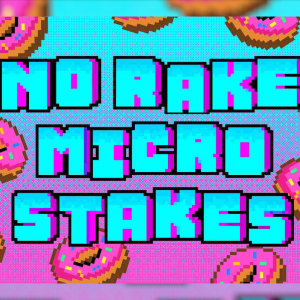GTO in Poker: Practical Game Theory Optimal Strategy with Charts
22 hours ago

21 Oct
Game Theory Optimal poker represents a mathematical approach to decision-making that creates unexploitable strategies. Understanding GTO principles enables players to establish baseline strategies while recognizing when exploitative adjustments produce higher expected value.
Modern poker strategy increasingly incorporates solver-based analysis, providing quantified frameworks for bet sizing, range construction, and defensive frequency calculations.
What Is Game Theory Optimal Poker
Game Theory Optimal strategy represents the mathematically perfect approach where opponents cannot exploit decision patterns regardless of their counter-strategy. GTO play achieves the Nash equilibrium, where no player benefits from unilaterally changing strategy.
Theoretical Foundation
GTO poker seeks indifference between opponent responses. When betting with a properly balanced range, opponents achieve the same expected value whether they call, fold, or raise. This balance prevents exploitation, as deviating from the equilibrium strategy creates opportunities for counter-exploitation.
A perfect GTO play remains theoretically unexploitable but does not maximize profit against suboptimal opponents. The strategy prioritizes defensive soundness over profit maximization, creating a floor below which expected value cannot fall.
Practical Application
Real-world GTO implementation involves approximating equilibrium through solver analysis and developing simplified heuristics for table application. Players cannot perfectly replicate solver outputs during live play, making practical GTO about understanding strategic principles rather than memorizing exact frequencies.
GTO strategy provides the baseline from which exploitative adjustments deviate. Knowing equilibrium frequencies enables recognition of opponent imbalances and calculation of optimal counter-strategies.
GTO Versus Exploitative Play
Optimal poker strategy combines GTO fundamentals with exploitative adjustments based on opponent tendencies and game dynamics.
When to Play GTO
GTO strategy proves essential against unknown opponents where tendency data remains insufficient. Strong, thinking opponents who adjust to perceived weaknesses require more balanced approaches.
Multi-way pots increase the necessity of GTO adherence, as exploitation attempts against one opponent may create vulnerabilities against others.
When to Deviate Exploitatively
Clear opponent imbalances warrant immediate exploitation. Players folding excessively to aggression invite increased bluffing frequency. Opponents calling too often require value-heavy ranges with reduced bluffing.
Passive opponents, unable to apply pressure, permit a broader range of continuations. Recreational players displaying obvious tendencies also provide opportunities for exploitation that are too profitable to ignore.
Minimum Defense Frequency and Pot Odds
Minimum Defense Frequency (MDF) calculates the percentage of hands requiring defense against bets to prevent opponent profit through pure bluffing. Understanding MDF enables the construction of properly balanced defensive ranges.
MDF Calculation Formula
MDF equals Pot Size divided by Pot Size plus Bet Size. Against a pot-sized bet, MDF calculates as 1 / (1 + 1) = 50 percent. Half-pot bets require 67 percent defense, calculated as 1 / (1 + 0.5).
This formula ensures that opponents are indifferent between bluffing and checking. When defending at MDF, opponent bluffs break even, eliminating the incentive for pure bluffing.
Table Application
Quick MDF approximations enable the construction of real-time defensive ranges. Pot-sized bets require defending 50% of the range. Two-thirds of pot bets necessitate a 60 percent defense. Half-pot bets demand 67 percent continuation.
Players construct defensive ranges by including the strongest hands, medium-strength showdown candidates, and balanced drawing hands.
Preflop Range Construction by Position
Balanced preflop strategies vary significantly by position, with tighter early position ranges expanding as positional advantage increases through later positions.
Early Position Ranges
Under-the-gun opening ranges typically include approximately 15-18 percent of hands in six-handed games. This range emphasizes premium pairs, Broadway combinations, and suited connectors strong enough to play against multiple opponents.
Early position tightness reflects positional disadvantage and multiple remaining opponents. Wide early openings invite squeezes from later positions and force difficult post-flop decisions out of position.
Middle and Late Position
Hijack and cutoff positions expand opening ranges to 25-30% and 35-40%, respectively. Additional weaker suited hands, offsuit broadway combinations, and medium pairs enter ranges as positional advantage increases.
Button opening ranges reach 45-50 percent in unopened pots.
Blind Defense Strategies
Big blind defense ranges against single raises typically include 35-50 percent of holdings. The already-invested big blind creates pot odds favoring wider defenses.
Small blind defense proves more complex due to position disadvantage. Three-betting or folding strategies often outperform calling.
Board Textures and Bet Sizing
GTO solutions produce varying bet sizes based on board texture, range advantage, and strategic considerations. Understanding texture-size relationships enables the selection of appropriate sizes.
Small Bet Sizing Applications
Small bets, typically 25-40 percent of the pot, appear on dynamic boards where ranges remain relatively balanced. Connected, monotone textures where both players hold numerous draws favor smaller sizing.
Small continuation bets effectively defend position advantage without committing heavily to marginal holdings.
Medium Sizing on Static Boards
Two-thirds to full pot bets dominate static, paired, or rainbow boards where range polarization occurs naturally. The in-position player typically holds a significant range advantage on dry textures.
Medium sizing provides sufficient fold equity for bluffs while building pots with strong hands.
Overbet Scenarios
Overbets exceeding pot size appear when ranges polarize heavily toward nuts or air. River situations where draws are complete or brick enable aggressive polarization.
Turn overbets occur less frequently but appear on cards dramatically favoring the aggressor's range.
Blockers and Range Construction
Blockers represent cards in a player's holdings that reduce the opponent's hand combinations, influencing optimal bluffing and calling decisions.
Bluffing With Blockers
Effective bluffs hold cards that block opponents' calling hands while allowing folding combinations to remain unblocked. Ace-high flush draw misses make strong river bluffs, as the ace blocks top pairs.
Broadway cards that block strong made hands improve bluffing candidates on draw-completing rivers.
Calling With Unblocking Hands
Strong bluff-catchers preferably unblock opponent bluffing combinations. When facing river aggression, holdings that unblock missed draws prove superior calls.
Medium pairs on draw-heavy boards unblock numerous missed combinations.
Solver Tools and Practical Heuristics
GTO solvers calculate equilibrium strategies through iterative algorithms, but direct application proves impractical. Players extract actionable heuristics through analysis techniques.
Node Locking Simplification
Node locking forces specific actions at decision points, simplifying game trees. Locking opponents to a single bet size reduces strategy complexity while maintaining strategic principles.
This technique transforms complex multi-size solutions into digestible single-size strategies.
Aggregated Frequencies
Rather than memorizing exact hand-by-hand actions, players aggregate similar holdings into action buckets. Grouping hands by strength tiers and extracting average frequencies enables the creation of implementable strategies.
The top 10 percent of range bets, at 90 percent, translates to "almost always bet the strongest hands."
Free Versus Paid GTO Solvers
Multiple solver options are available across various price points, each offering distinct features and learning curves.
Free Options
GTOWizard offers limited free access to precomputed solutions across common scenarios. The free tier provides range visualizations and aggregated statistics, but does not offer full solving capability.
Simple Postflop restricts hand history analysis but provides basic solving for learning fundamental concepts.
Paid Solver Recommendations
PioSolver represents the industry standard for custom solving and detailed analysis. The one-time purchase provides unlimited solving capability, though the learning curve proves steep for beginners. Edge and Basic versions offer tiered pricing matching skill advancement.
GTO+ provides similar functionality with alternative interface preferences. Both platforms enable comprehensive game tree construction, allowing analysis of specific opponent tendencies through custom input ranges.
GTOWizard premium subscriptions grant full access to extensive precomputed libraries covering cash games and tournaments. The subscription model suits players who prioritize convenience over custom solving capabilities.
Mixing Frequencies Beginners Should Ignore
GTO outputs frequently display complex, mixed strategies that are impossible to replicate during live play. New players benefit from simplification priorities.
Random Number Generation
Solver outputs showing a 67 percent bet and a 33 percent check require randomization mechanisms that are unavailable at tables. Beginners should simplify their strategies to pure ones based on hand strength and board texture.
Betting on the most substantial holdings and checking the weakest proves more valuable than memorizing exact mixture percentages.
Thin Value Mixing
Solutions frequently mix top pairs between betting and checking across multiple streets. Beginners benefit from simplified approaches: bet strong hands, check marginal holdings.
Complex river mixing with medium showdown value proves particularly indispensable.
Common GTO Learning Mistakes
Players transitioning to solver-based study often encounter predictable pitfalls that hinder skill development.
Over-Memorization Without Understanding
Memorizing ranges and frequencies without comprehending underlying strategic principles produces brittle knowledge. Players must understand why strategies exist before attempting to replicate them.
Effective learning emphasizes concepts over memorization. Understanding principles enables the generation of effective strategies rather than merely recalling them.
Ignoring Population Tendencies
Playing pure GTO against exploitable opponents leaves significant money on the table. Solver studies should inform the baseline strategy, while observation and adaptation drive profit maximization.
The strongest players blend GTO fundamentals with exploitative adjustments.
Studying Inappropriate Situations
Beginning with obscure river scenarios before mastering preflop fundamentals wastes study time. Logical progression starts with opening ranges, continues through standard flop textures, and eventually addresses complex multi-street decisions.
High-frequency spots generate more learning value than edge cases.
Neglecting Hand Reading Skills
GTO study sometimes diminishes the emphasis on hand reading, as solvers provide complete information that is absent in real play. Strong players maintain opponent range construction skills alongside GTO knowledge.
Combining range narrowing through action sequences with GTO baseline frequencies produces superior decision-making.
Wrapping Up
Game Theory Optimal poker provides the mathematical framework for unexploitable play while serving as the foundation for exploitative adjustments. Understanding MDF calculations, balanced range construction, and blocker effects enables the practical application of solver concepts.
Effective GTO integration combines theoretical knowledge with the recognition of opponent deviations that warrant exploitation. Preflop range discipline, characterized by position- and texture-appropriate sizing, along with proper defensive frequencies, establishes a solid baseline strategy.
Solver tools range from free introductory options to professional-grade software support skill development. Beginners should prioritize conceptual understanding over memorizing exact frequencies.
Avoiding common learning mistakes, including over-memorization, population ignorance, and inappropriate study focus, accelerates improvement. GTO study proves most valuable when combined with exploitative thinking and systematic skill progression.







Comments
You need to be logged in to post a new comment